| Listing 1 - 10 of 15 | << page >> |
Sort by
|
Book
ISBN: 0883859289 9780883859285 Year: 2012 Publisher: Cambridge Cambridge University Press
Abstract | Keywords | Export | Availability | Bookmark
 Loading...
Loading...Choose an application
- Reference Manager
- EndNote
- RefWorks (Direct export to RefWorks)
Among other things, Aaboe shows us how the Babylonians did calculations, how Euclid proved that there are infinitely many primes, how Ptolemy constructed a trigonometric table in his Almagest, and how Archimedes trisected the angle. Some of the topics may be familiar to the reader, while others will seem surprising or be new.
Mathematics --- History. --- Mathematics, Ancient.
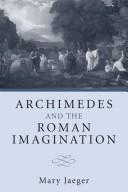
ISBN: 9780472116300 0472116304 0472025325 9780472025329 1282593773 9786612593772 9781282593770 6612593776 Year: 2008 Publisher: Ann Arbor University of Michigan Press
Abstract | Keywords | Export | Availability | Bookmark
 Loading...
Loading...Choose an application
- Reference Manager
- EndNote
- RefWorks (Direct export to RefWorks)
An innovative exploration of the cultural reception of the greatest mathematician of the ancient world.
Mathematicians --- Mathematics, Ancient --- Archimedes --- Mathematics, Ancient. --- Mathematicians - Greece - Biography --- Archimedes - Biography --- Archimedes.
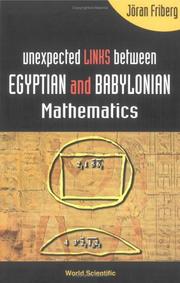
ISBN: 1281881287 9786611881283 9812701125 9789812701121 9789812563286 9812563288 9781281881281 661188128X Year: 2005 Publisher: Hackensack, N.J. World Scientific
Abstract | Keywords | Export | Availability | Bookmark
 Loading...
Loading...Choose an application
- Reference Manager
- EndNote
- RefWorks (Direct export to RefWorks)
Mesopotamian mathematics is known from a great number of cuneiform texts, most of them Old Babylonian, some Late Babylonian or pre-Old-Babylonian, and has been intensively studied during the last couple of decades. In contrast to this Egyptian mathematics is known from only a small number of papyrus texts, and the few books and papers that have been written about Egyptian mathematical papyri have mostly reiterated the same old presentations and interpretations of the texts. In this book, it is shown that the methods developed by the author for the close study of mathematical cuneiform texts ca
Mathematics, Ancient. --- Mathematics, Babylonian. --- Mathematics, Egyptian. --- Ancient mathematics
Book
ISBN: 1282922165 9786612922169 0761853499 9780761853497 0761853480 9780761853480 9780761853480 9780761853497 Year: 2010 Publisher: Lanham, MD University Press of America
Abstract | Keywords | Export | Availability | Bookmark
 Loading...
Loading...Choose an application
- Reference Manager
- EndNote
- RefWorks (Direct export to RefWorks)
This comprehensive text on African Mathematics addresses some of the problematic issues in the field, such as attitudes, curriculum development, educational change, academic achievement, standardized and other tests, performance factors, student characteristics, cross-cultural differences and studies, literacy, native speakers, social class and differences, equal education, teaching methods, and more.
Ethnomathematics --- Mathematics, Ancient --- Mathematics --- Symbolism of numbers. --- History. --- Africa. --- Afrika.
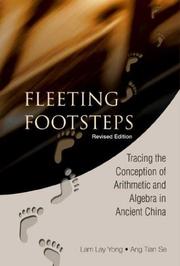
ISBN: 1281880736 9786611880736 9812567259 9789812567253 9789812386960 9812386963 9781281880734 Year: 2004 Publisher: River Edge, NJ World Scientific
Abstract | Keywords | Export | Availability | Bookmark
 Loading...
Loading...Choose an application
- Reference Manager
- EndNote
- RefWorks (Direct export to RefWorks)
The Hindu-Arabic numeral system (1, 2, 3,...) is one of mankind'sgreatest achievements and one of its most commonly usedinventions. How did it originate? Those who have written about thenumeral system have hypothesized that it originated in India; however,there is little evidence to support this claim. This book provides considerable evidence to show that theHindu-Arabic numeral system, despite its commonly accepted name,has its origins in the Chinese rod numeral system. This system waswidely used in China from antiquity till the 16th century. It was usedby officials, astronomers, traders an
Mathematics, Chinese --- Mathematics, Ancient --- Ancient mathematics --- Early works to 1800 --- Sun-tzu suan ching
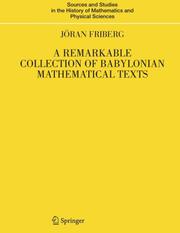
ISBN: 1281115452 9786611115456 0387489770 0387345434 Year: 2007 Publisher: New York : Springer,
Abstract | Keywords | Export | Availability | Bookmark
 Loading...
Loading...Choose an application
- Reference Manager
- EndNote
- RefWorks (Direct export to RefWorks)
This new text from Jöran Friberg, the leading expert on Babylonian mathematics, presents 130 previously unpublished mathematical clay tablets from the Norwegian Schøyen collection, and provides a synthesis of the author's most important work. Through a close study of these tablets, Friberg has made numerous amazing discoveries, including the first known examples of pre-Classical labyrinths and mazes, a new understanding of the famous table text Plimpton 322, and new evidence of Babylonian familiarity with sophisticated mathematical ideas and objects, such as the three-dimensional Pythagorean equation and the icosahedron. In order to make the text accessible to the largest possible audience, the author has included an introductory chapter entitled, "How to get a better understanding of mathematical cuneiform texts." Throughout the text he avoids anachronisms and makes every effort to teach the reader to do the same. The approach in this book is inherently pedagogical, as Friberg illustrates all the steps of the process of interpretation and clearly explains the mathematical ideas, including terminology, metrological systems, and methods of calculation. Drawings and color photos of a large selection of tablets are also included. Particularly beautiful hand copies of the most complicated texts were made by Farouk Al-Rawi, professor of Ancient Languages and Archaeology at Baghdad University. While the book is reader-friendly, it remains as detailed and exhaustive as possible. It is the most comprehensive treatment of a set of Babylonian mathematical texts ever published and will open up this subject to a new generation of students, mathematicians, and historians of science. Jöran Friberg is Professor Emeritus of Mathematics at Chalmers University of Technology, Sweden. He has recently published the book Unexpected Links Between Egyptian and Babylonian Mathematics (World Scientific 2005), and its sequel Amazing Traces of a Babylonian Origin in Greek Mathematics (World Scientific 2007).
Mathematics, Babylonian. --- Mathematics, Ancient. --- Ancient mathematics --- Mathematics. --- History. --- History of Mathematical Sciences. --- Annals --- Auxiliary sciences of history --- Math --- Science --- Schøyen, Martin --- Private collections.
Book
ISBN: 0817646949 9786613086297 0817646957 1283086298 Year: 2010 Publisher: New York : Springer,
Abstract | Keywords | Export | Availability | Bookmark
 Loading...
Loading...Choose an application
- Reference Manager
- EndNote
- RefWorks (Direct export to RefWorks)
This book presents contributions of mathematicians covering topics from ancient India, placing them in the broader context of the history of mathematics. Although the translations of some Sanskrit mathematical texts are available in the literature, Indian contributions are rarely presented in major Western historical works. Yet some of the well-known and universally-accepted discoveries from India, including the concept of zero and the decimal representation of numbers, have made lasting contributions to the foundation of modern mathematics. Key topics include: The work of two well-known Indian mathematicians: Brahmagupta and Bhaskaracharya; The relationship of Indian mathematics to the mathematics of China and Greece; The transmission of mathematical ideas between the Western and non-Western world; A study of Keralese mathematics and coverage of the techniques used in the Śulbasūtras; The calendrical calculations, complete with computer programs, enabling readers to determine Indian dates. Ancient Indian Leaps into Mathematics examines these ancient mathematical ideas that were spread throughout India, China, the Islamic world, and Western Europe. Through a systematic approach, it gives an historical account of ancient Indian mathematical traditions and their influence on other parts of the world.
Mathematics, Ancient --- Ancient mathematics --- Mathematics. --- Philosophy, Asian. --- History. --- History of Mathematical Sciences. --- Non-Western Philosophy. --- Asian philosophy --- Oriental philosophy --- Philosophy, Oriental --- Annals --- Auxiliary sciences of history --- Math --- Science
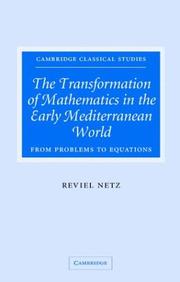
ISBN: 0521829968 0521041740 1139810081 1107148006 0511212461 0511216068 1107318165 0511720009 0511210698 0511214278 1299398855 0511207093 9780521829960 Year: 2004 Publisher: Cambridge ; New York : Cambridge University Press,
Abstract | Keywords | Export | Availability | Bookmark
 Loading...
Loading...Choose an application
- Reference Manager
- EndNote
- RefWorks (Direct export to RefWorks)
The transformation of mathematics from ancient Greece to the medieval Arab-speaking world is here approached by focusing on a single problem proposed by Archimedes and the many solutions offered. In this trajectory Reviel Netz follows the change in the task from solving a geometrical problem to its expression as an equation, still formulated geometrically, and then on to an algebraic problem, now handled by procedures that are more like rules of manipulation. From a practice of mathematics based on the localized solution (and grounded in the polemical practices of early Greek science) we see a transition to a practice of mathematics based on the systematic approach (and grounded in the deuteronomic practices of Late Antiquity and the Middle Ages). With three chapters ranging chronologically from Hellenistic mathematics, through late Antiquity, to the medieval world, Reviel Netz offers an alternate interpretation of the historical journey of pre-modern mathematics.
Mathematics, Ancient --- Mathématiques anciennes --- Social aspects --- Aspect social --- Pays mususlmans --- Mathematics --- History --- History. --- Mathématiques --- Histoire --- Arts and Humanities --- Math --- Science
Book
ISBN: 9783110335934 9783110336481 9783110336481 9783110336498 3110336480 311033593X Year: 2013 Volume: 11 Publisher: Berlin
Abstract | Keywords | Export | Availability | Bookmark
 Loading...
Loading...Choose an application
- Reference Manager
- EndNote
- RefWorks (Direct export to RefWorks)
Until recently, only six of thirteen books comprising Diophantus' Arithmetica were known to us. Four other books in an Arabic translation have been discovered recently. We can now understand the organization of this work and its long-lasting impact on mathematics. The present book offers the first historical and mathematical study of the work as it has survived in ten books.
Diophante, --- Mathematics, Ancient --- Mathematics, Greek --- Greek mathematics --- Geometry --- Ancient mathematics --- Diophantus, --- Alexandria, Diophantus of --- Diofant, --- Diophantos, --- Diyūfanṭus, --- Διοφαντός, --- Mathematics, Greek. --- Diophante --- Diophantes Alexandrinus --- Diophantus --- Diophantos van Alexandrië --- Ancient arithmetics. --- Diophantus of Alexandria. --- diophantine analysis. --- history of mathematics.
Book
ISBN: 3319445960 3319445979 9783319445977 Year: 2016 Publisher: Cham : Springer,
Abstract | Keywords | Export | Availability | Bookmark
 Loading...
Loading...Choose an application
- Reference Manager
- EndNote
- RefWorks (Direct export to RefWorks)
This monograph presents in great detail a large number of both unpublished and previously published Babylonian mathematical texts in the cuneiform script. It is a continuation of the work A Remarkable Collection of Babylonian Mathematical Texts (Springer 2007) written by Jöran Friberg, the leading expert on Babylonian mathematics. Focussing on the big picture, Friberg explores in this book several Late Babylonian arithmetical and metro-mathematical table texts from the sites of Babylon, Uruk and Sippar, collections of mathematical exercises from four Old Babylonian sites, as well as a new text from Early Dynastic/Early Sargonic Umma, which is the oldest known collection of mathematical exercises. A table of reciprocals from the end of the third millennium BC, differing radically from well-documented but younger tables of reciprocals from the Neo-Sumerian and Old-Babylonian periods, as well as a fragment of a Neo-Sumerian clay tablet showing a new type of a labyrinth are also discussed. The material is presented in the form of photos, hand copies, transliterations and translations, accompanied by exhaustive explanations. The previously unpublished mathematical cuneiform texts presented in this book were discovered by Farouk Al-Rawi, who also made numerous beautiful hand copies of most of the clay tablets. Historians of mathematics and the Mesopotamian civilization, linguists and those interested in ancient labyrinths will find New Mathematical Cuneiform Texts particularly valuable. The book contains many texts of previously unknown types and material that is not available elsewhere.
Mathematics --- Study and teaching. --- Semitic languages. --- History of Mathematical Sciences. --- Semitic Languages. --- Popular Science in Mathematics. --- Afroasiatic languages --- Mathematics. --- History. --- Annals --- Auxiliary sciences of history --- Math --- Science --- Mathematics, Babylonian. --- Mathematics, Ancient. --- Ancient mathematics
| Listing 1 - 10 of 15 | << page >> |
Sort by
|

 Search
Search Feedback
Feedback About UniCat
About UniCat  Help
Help News
News